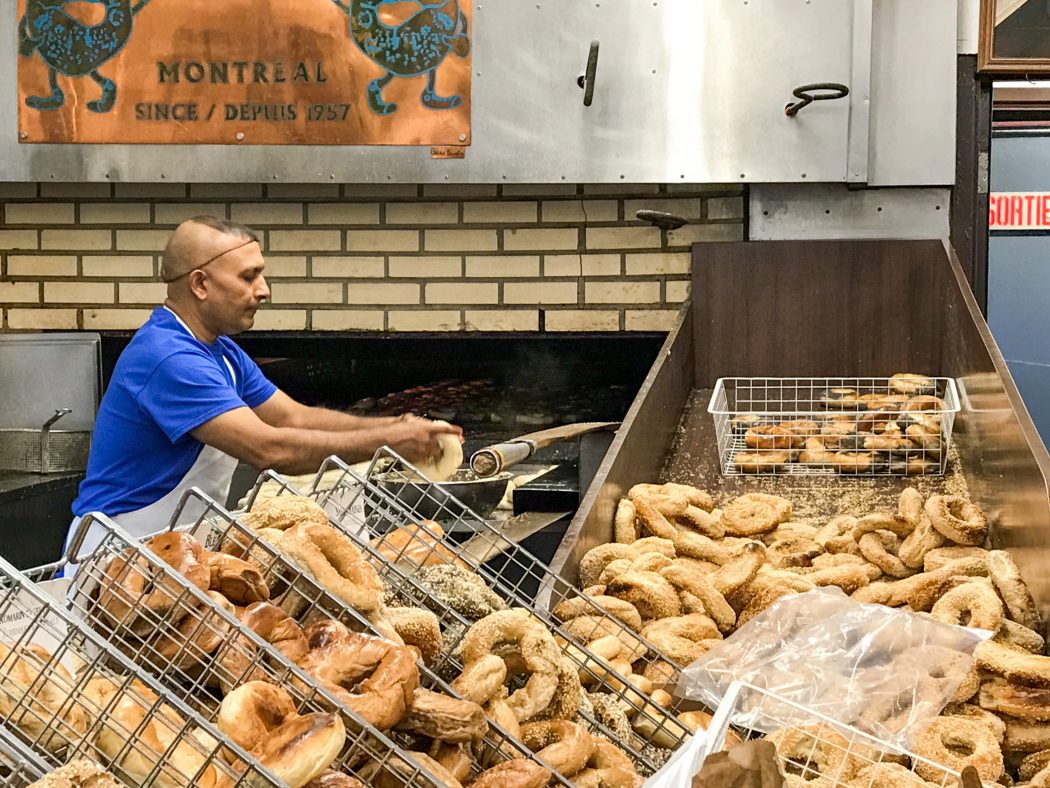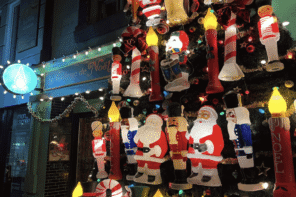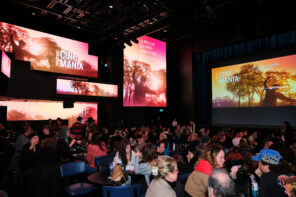On the morning that Robert Bowers committed one of the most hateful acts of violence against Jews in American history, the New York Times published an article about how the Squirrel Hill Jewish Community Center “became a command post of sorts, with grief counselors, law enforcement officials… and food, lots and lots of food.” Barely twenty-four hours after the massacre, the woman seated behind me in Westmount’s Victoria Hall emphatically shares her tips for cooking meat pie for a crowd (just double the meat). The stained glass windows rattle with the room’s anticipation, which is filled mainly by senior citizens of Montreal’s bustling Jewish community. Also present are three of the most influential women in Jewish culinary history: James Beard Award-winning cookbook author Joan Nathan, Canadian Living food editor Daphna Rabinovitch, and noted McGill alumni and food historian/writer Lara Rabinovitch (no relation to Daphna). They are all here to discuss food.
McGill U3 student Colin Rier stands over six feet tall and jaunty behind a sample of McGill’s collection of rare Jewish cookbooks, welcoming the twinkly-eyed audience. The books are also part of his display on Montreal’s Jewish food history in the McLennan Library. As part of his internship with the Goodman Foundation, Rier worked under the direction of Natalie Cook, a McGill Professor and Associate Dean of the library’s Archives & Rare Collections sector, to help plan Treasures for Our Children: Jewish Foodways for the 21st Century. As a food history major (of his own design), Rier hopes the event will illuminate the value of food beyond the joy of eating it.
“Food is a collection of amazing stories,” Rier said. “Each cuisine is mass represented by two or three books, but underneath those two or three books there’s thousands more.”
The event name is tied to one such buried book, A Treasure for My Daughter, which is currently in its 14th edition. Written by the Ethel Epstein Ein Chapter of Canadian Hadassah-WIZO in 1950, the book is a hard copy of a home economics class for Jewish soon-to-be brides and intended to guide them back to Jewish tradition. Lara Rabinovitch, who wrote her bachelor’s thesis on the guidebook, explains that Jewish culture has been unusually preserved in Montreal. She calls Montreal a “living archive of food” that has undergone a “galapagos effect.” Many Jewish food establishments have not changed since Ashkinazi immigrants opened them in the first half of the 20th century. Lara Rabinovitch greatly accredits this to Montreal’s encouragement of multicultural traditions, the reason for a relatively high number of children attending Jewish day schools (although the number is shrinking).
“It genuinely matters to them to keep their family tradition going,” Rier said of Wilensky’s. “It is not unique to Jewish food, but in the case of Montreal, it is most commonly seen in Jewish restaurants.”
Montreal’s Jewish community traces back to 1768 and was fortified at the turn of the nineteenth century, when a mass migratory group of Jews fleeing persecution settled along St. Laurent Boulevard, the island’s divider between the English west and French east. They quickly became leaders of Montreal’s textile industry, establishing a workforce that required fuel (hence, Schwartz’s, St. Viateur Bagel, Fairmount Bagel, Moishes, Wilensky’s, etc.). The food was, and remains, good: simple, affordable, flavorful, and, as Rier puts it, friendly.
“There’s something about eating a smoked meat sandwich,” Rier begins. “The place [Schwartz’s] reeks of smoked meat. Your clothes smell like smoked meat once you’ve been in there for 2 minutes, and the lighting is awful – it’s like a neon white light. And it’s the perfect experience.”
As Montreal’s non-Jewish population recognized the goodness of Jewish food, a Montrealization of Jewish foods occurred, so that, today, most people that Rier has talked with are clueless on the Jewish origin of the bagel. As Joan Nathan traces circles in the air, she says, “Jewish history of food is like a bagel . . . twisting and turning forever.”
Forever rotating, but never stale. After WWII, Joan Nathan explains, Jewish cooking became “less self-conscious.” The community was “joyous again,” and society’s perspective on cooking changed when the chef’s collar upgraded from blue to white. What Nathan views as a new time for Jewish history began: Jews looked outward. Even with an increase in religious intermarriage and a recent trendiness of the Jewish food scene (exemplified by Freedman’s #4 spot on Bon Appetit’s 2018 ‘America’s Best New Restaurant’ list, and Arthurs Nosh Bar on Notre Dame St W.), Jewish culture has been upheld through food. Take Jonathan Gold, whom Lara Rabinovitch worked with while producing City of Gold. Gold was a sternly secular Jew and explorer of every sub-sub-sub-food culture in Los Angeles, yet he requested a pastrami sandwich for his final meal. “Embryonic” is how Rabinovitch describes this relationship.
As Montreal’s non-Jewish population recognized the goodness of Jewish food, a Montrealization of Jewish foods occurred, so that, today, most people that Rier has talked with are clueless on the Jewish origin of the bagel.
Pointedly, Daphna Rabinovitch vividly recalls her first time making chicken soup in her late 20s as overwhelmingly comforting, and how, when she cooks it now or bakes challah weekly, she feels “connected.”
Jewish food pushes local cuisine boundaries by sticking to its fundamental forms. That’s why Nathan was fed yucca latkes with cilantro cream instead of potato latkes with sour cream while in El Salvador. Sometimes the “bagel” of Jewish food history is prepared with poppy seeds or honey water or lox, but it remains a bagel.
Nathan says that, “Jewish food is rooted in the laws . . . Just like the hymns and the music connect you to a sacred space,” food has immensely contributed to Jews’ identification with each other beyond spatiotemporal borders.
The massacre at Squirrel Hill was a horror reel of history. History has shaped the Jewish community, but they have returned the favor in multiplicitude. The Jewish Foodways event is just one instance of this. So we all must continue, or begin, to act as neighbors. One crucial step in this direction, Lara Rabinovitch advocates, is active archiving of the life of Jewish communities.








